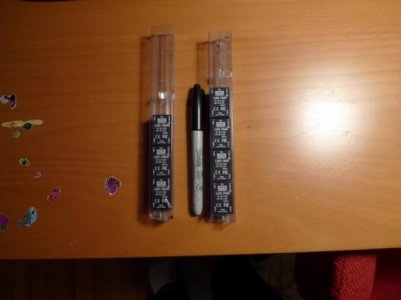Sweet! I was hoping this would isolate them sufficiently. I was just thinking that if the voltage couldn't get from one to the other, it should work.
That's weird, but it's probably better that they work together than otherwise. Did you by chance try it with diodes only on the + or - side?
Even if I can't modify the board sufficiently to stick some SMD diodes on, I bet I can finagle something. The white channels can just be single, 1A drivers since the white is overpowering anyways, and the actinic shouldn't really be run past 1A, so only two channels really need to be dual driver. Going to update the schematic soon anyways so it's done if I ever need to make more boards.
Thanks for trying!

